There is a table having 3 columns and 4 rows . Based on the table , there 3 questions . Question has 4 options (a) , (b) , (c) and (d) , Only one of the four options is correct .
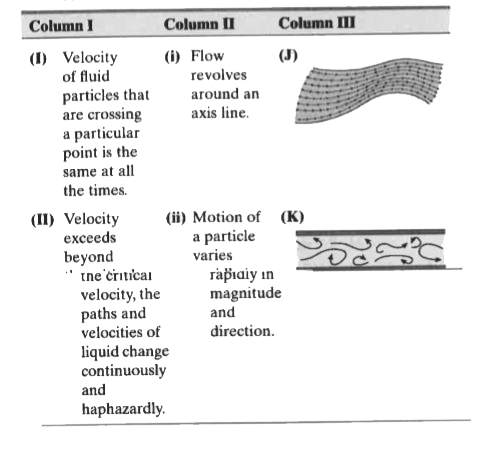
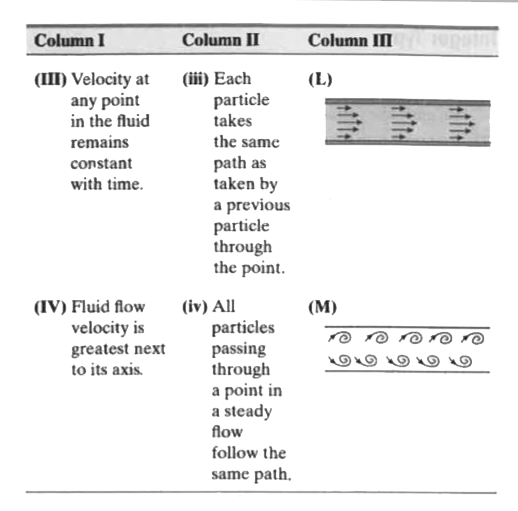
What are the characteristics of steady flow ?
(III) (i) (K)
(I) (i) (L)
(I) (iii) (J)
(I) (iv) (L)
(1)→(b).(2)→(d),(3)→(c)
Topper's Solved these Questions
- FLUIDSBOOK - RESNICK AND HALLIDAYCHAPTER - FLUIDSEXERCISE - PRACTICE QUESTIONS (Integer Type )
5 Videos
- FLUIDSBOOK - RESNICK AND HALLIDAYCHAPTER - FLUIDSEXERCISE - PRACTICE QUESTIONS (Linked Comprehension )
9 Videos
- ELECTROMAGNETIC WAVES BOOK - RESNICK AND HALLIDAYCHAPTER - ELECTROMAGNETIC WAVES EXERCISE - PRACTICE QUESTIONS (Integer Type)
3 Videos
- FORCE AND MOTION - I BOOK - RESNICK AND HALLIDAYCHAPTER - FORCE AND MOTION - I EXERCISE - PRACTICE QUESTIONS (Integer Type)
3 Videos
Similar Questions
In each question, there is a table having 3 columns and 4 rows. Based on the table, there are 3 questions. Each question has 4 options (a), (b), ( c) and (d), ONLY ONE of these four options is correct.
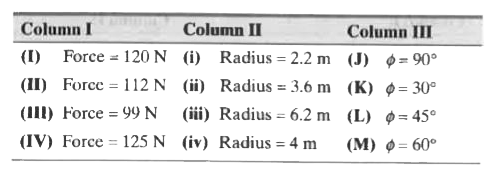
Which object has 137.5N⋅m as the resulting torque (as a vector)?
View SolutionIn each question, there is a table having 3 columns and 4 rows. Based on the table, there are 3 questions. Each question has 4 options (a), (b), ( c) and (d), ONLY ONE of these four options is correct.

Which object has 480N⋅m as the resulting torque (as a vector)?
View Solution
Knowledge Check
There is a table having 3 columns and 4 rows . Based on the table , there 3 questions . Question has 4 options (a) , (b) , (c) and (d) , Only one of the four options is correct .

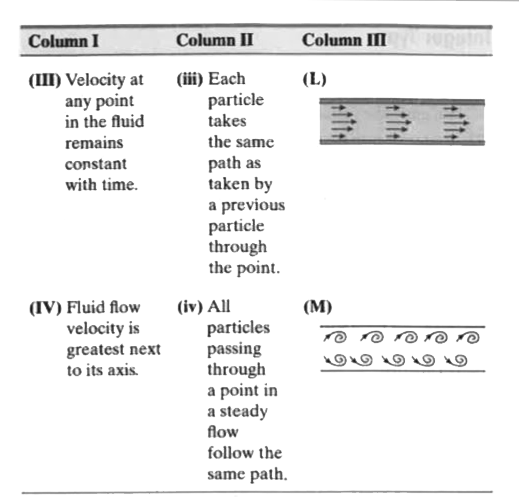
What are the characteristics of turbulent flow ?A(I) (iii) (K)B(IV) (iii) (L)C(III) (iii) (L)D(II) (ii) (K)There is a table having 3 columns and 4 rows . Based on the table , there 3 questions . Question has 4 options (a) , (b) , (c) and (d) , Only one of the four options is correct .
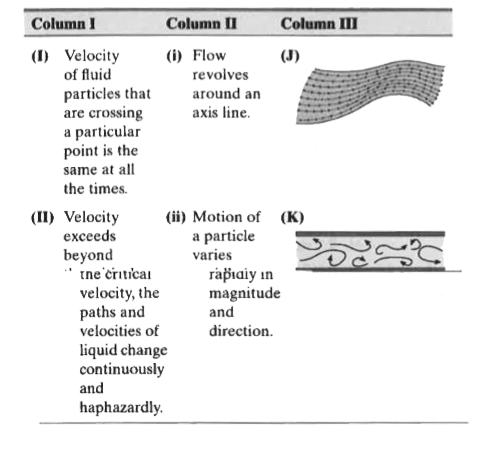
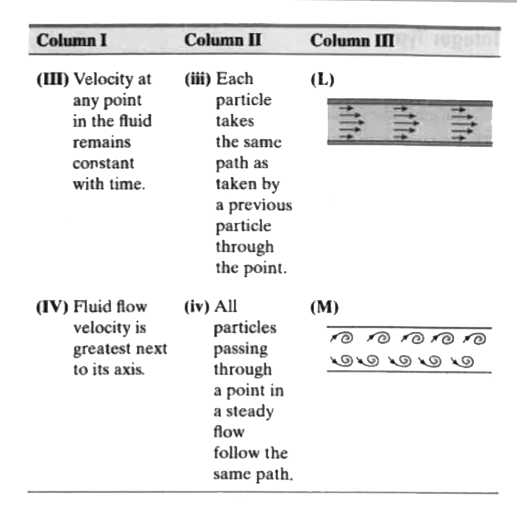
What are the characteristics of laminar flow ?A(IV) (iv) (J)B(III) (iv) (L)C(II) (i) (M)D(II) (i) (K)In each question, there is a table having 3 columns and 4 rows. Based on the table, there are 3 questions. Each question has 4 options (a), (b), ( c) and (d), ONLY ONE of these four options is correct.
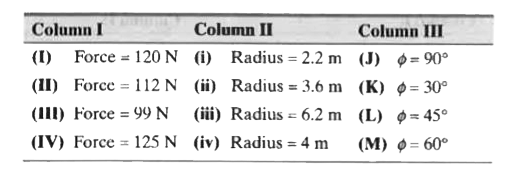
Which object has 178.2√3N⋅m as the resulting torque (as a vector)?A(III) (ii) (L)B(III) (ii) (K)C(II) (iii) (K)D(I) (i) (M)
In each question, there is a table having 3 columns and 4 rows. Based on the table, there are 3 questions. Each question has 4 options (a), (b), ( c ) and (d), ONLY ONE of these four options in correct.
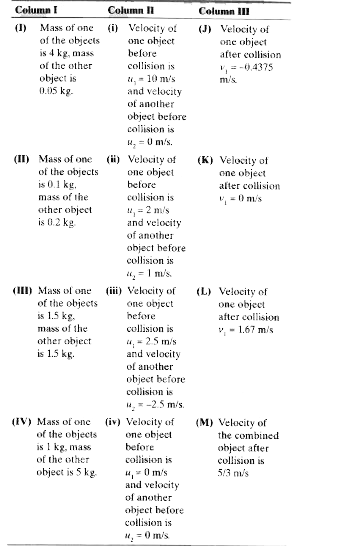
In which condition is the velocity of one of the objects after collision 35 m/s ?
View SolutionIn each question, there is a table having 3 columns and 4 rows. Based on the table, there are 3 questions. Each question has 4 options (a), (b), ( c ) and (d), ONLY ONE of these four options in correct.
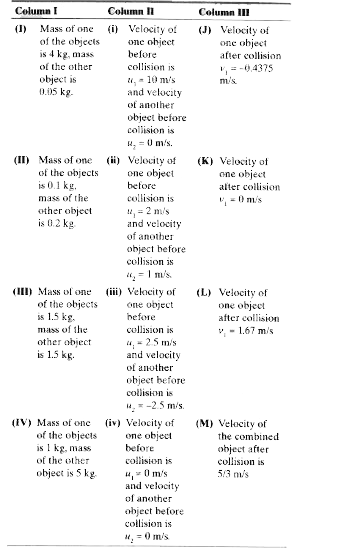
In which condition is the velocity of one of the objects after collision 1.165 m/s ?
View Solutionthere is a table having 3 columns and 4 rows. Based on the table, there are 3 questions. Each question has 4 options (a), (b), (c) and (d), ONLY ONE of these four options is correct.
Doppler's effect
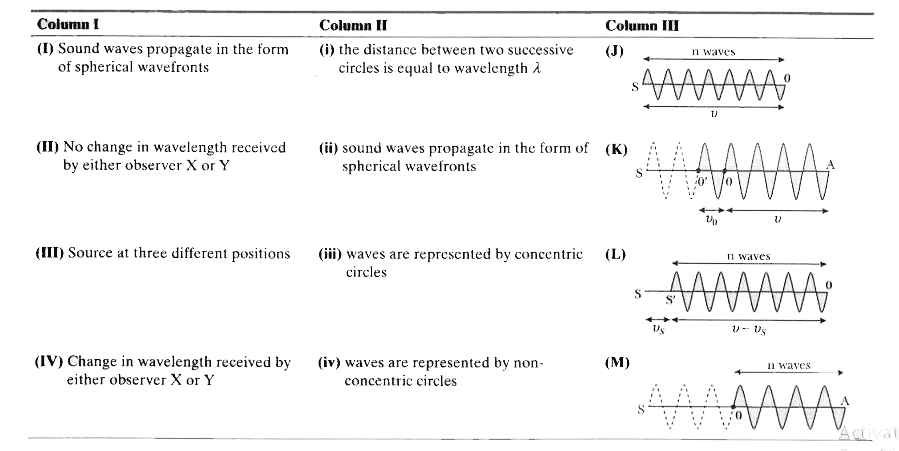
What happens when the source is moving but observer is at rest?
View Solutionthere is a table having 3 columns and 4 rows. Based on the table, there are 3 questions. Each question has 4 options (a), (b), (c) and (d), ONLY ONE of these four options is correct.
Doppler's effect
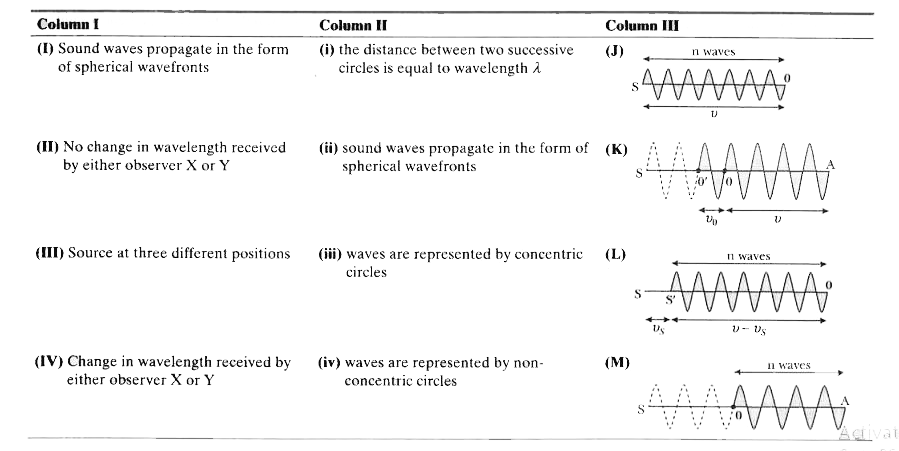
What happens when the source is at rest, but observer is moving?
View Solutionthere is a table having 3 columns and 4 rows. Based on the table, there are 3 questions. Each question has 4 options (a), (b), (c) and (d), ONLY ONE of these four options is correct.
Doppler's effect
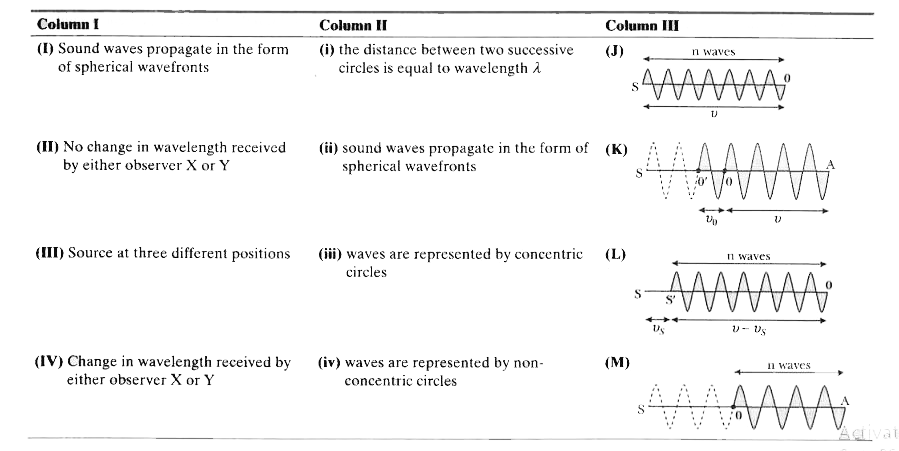
What happens when the observer and source are stationary?
View Solution
